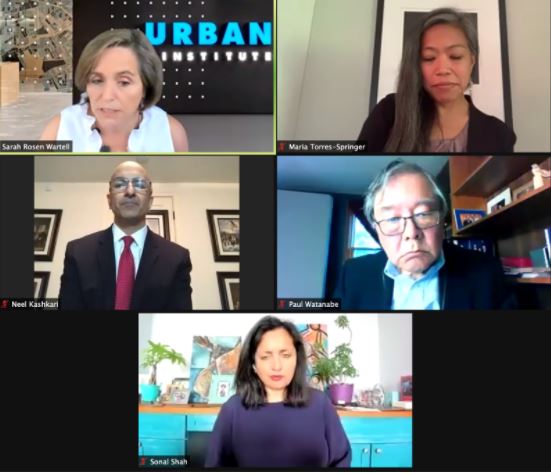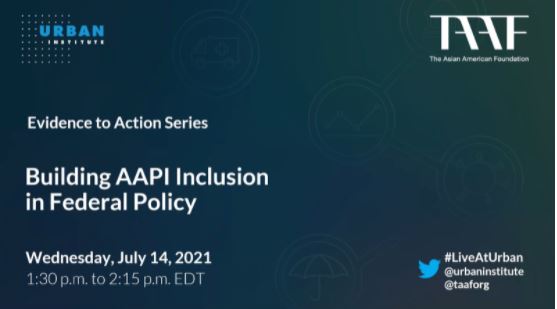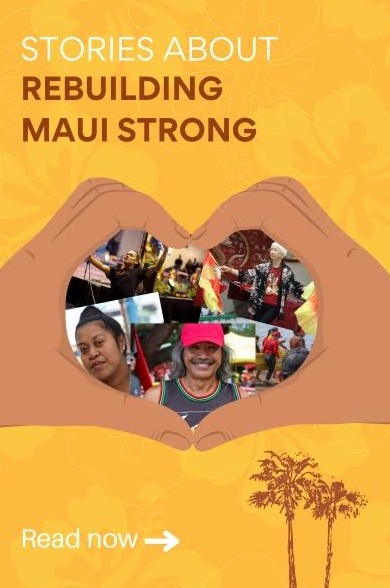By Briana Lim, AsAmNews Intern
A new report out warns against dismissing the Asian American Pacific Islander community as a model minority during this time of increased anti-Asian hate.
The report from The Urban Institute and The Asian American Foundation (TAAF) looks at ways federal policy can improve the lives of AAPIs.
The Discussion:
A virtual webinar introducing the study discussed the long history of anti-Asian legislation and discrimination, the recent increase of AAPI hate crimes since the pandemic, and how policy makers and philanthropists should proceed.
Paul Watanabe, professor and director of the Institute for Asian American Studies at UMass Boston, stated the importance of studying Asian Americans. “Asian Americans are the fastest growing ethnic group,” consisting of over 20 million citizens with over 50 different countries of descent. Watanabe, who is Japanese American, points out the incredible diversity of the AAPI community, and how it is far from the “monolithic model minority.”
Averages and other aggregate data are unable to capture the diversity and disparity between Asian American subgroups, Wantanabe warns. Asian Americans can be found at the upper and lower-most stratums of income and educational achievement. Pfizer reports, U.S. Filipinos have a higher prevalence of being obese or overweight than non-Hispanic Whites. U.S.-born Vietnamese women are four times as likely, as compared to all other AAPI groups, of dying of breast cancer.
He also talks of the difficulties of naturalizing and overcoming the “perpetual foreigner” stereotype. “Many people don’t know this, but there was the Chinese Exclusion Act in 1882, which was later extended to all Asians…Japanese Americans [like Wantanbe himself] couldn’t naturalize until 1952!”

Sonal Shah, president of TAAF, constantly questions “Who are we?” in understanding the nuances of the AAPI community. This guides her work on how to support local groups, and how to “strengthen their abilities to respond.” She describes the lack of infrastructure in place to support AAPI organizations. Of philanthropic donations, 0.5% go to Asian American foundations.
TAAF goals include: addressing anti-Asian hate, conducting research, and educating the public. Shah emphasizes the importance of thinking on a local level and providing for the AAPI communities’ basic needs like safety and healthcare.
Maria Torres-Springer, VP of US Programs at the Ford Foundation, emphasizes how AAPI communities are “inseparable from broader groups.” She notes how the devastating Atlanta shootings of Asian American women this year were not only attacks against AAPI community, but also tied to violence against all women, and the mistreatment of workers at the margins of society.
Neel Kashkari, president and CEO of the Minneapolis Federal Reserve, explains the difficulties of making effective policy, and the significance of grassroots-level activism and outreach. Policy-makers’ “hearts are in the right place,” but they need help, he explains. “Anecdotes shed light on aggregate data.”
Kashkari notes the roadblocks to the pandemic’s Paycheck Protection Program. Language barriers and extensive documentation requirements posed challenges to distributing the PPP loans to minority, and especially undocumented, communities (there are over a million undocumented Asian Americans). Additionally, minority-owned businesses are less likely to have relationships with local banks that were necessary to receive the loan.
The group gave recommendations for where policy-making should head in the future. They all agreed on the importance of disaggregating data — breaking down the concept of a monolithic “Asian American group” and highlighting diversity within it. They are optimistic that the advances in technology and data science can make it happen.
The group concluded its discussion by reiterating that advancements for the AAPI community does not result in a “zero sum.” Progress for certain minority groups results in progress for all, and all minority groups should work together towards eradicating racism.
The Study:
The study includes recommendations and best practices for policy-makers, philanthropies, and other AAPI advocates. The six key recommendations include:
- Support efforts aimed at advancing policies that matter to AAPI communities.
- Drive a national, multisector effort to improve research on AAPIs, including high-quality disaggregated data.
- Create or support a national platform to strengthen collaboration among AAPI organizations.
- Use public education and work with the media to increase the public’s knowledge of AAPI communities.
- Invest in the power of multiracial coalitions by strengthening collaboration and coordination between AAPI organizations and other historically marginalized groups.
- Address the need for increased funding support for AAPI organizations down to local communities.
“We hope that funders and leaders will further develop and implement these recommendations to build inclusion and foster belonging for AAPI communities in the US,” the researchers wrote.
AsAmNews has Asian America in its heart. We’re an all-volunteer effort of dedicated staff and interns. Check out our new Instagram account. Go to our Twitter feed and Facebook page for more content. Please consider interning, joining our staff, or submitting a story or making a contribution.




